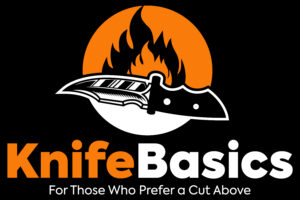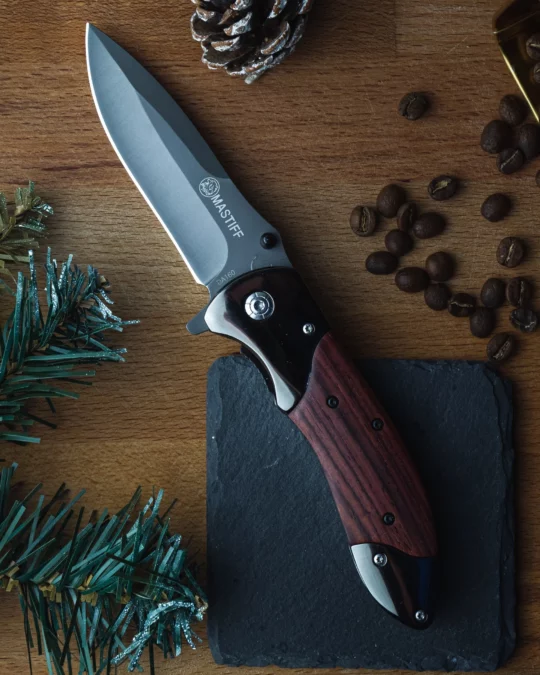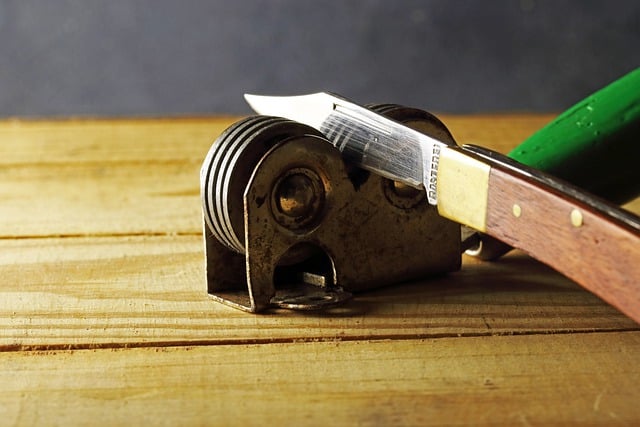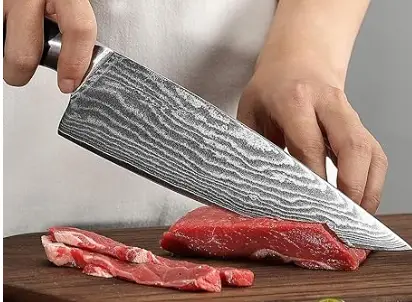In the world of knives, stainless steel is a popular choice for its durability and resistance to rust and corrosion. One particular type of stainless steel that has garnered attention is the 440C steel. But is it truly a high-quality knife material?
With its superior strength, hardness, and edge retention, knives made from 440C steel are known for their performance and longevity. Whether you’re a professional chef or an avid home cook, having a knife that can withstand the rigors of culinary tasks is essential. However, as with any material, there are various grades of 440 stainless steel, each with its own composition and characteristics.
This article will delve into the different types of 440C steel and their suitability for knife making. We’ll explore the benefits, drawbacks, and common misconceptions surrounding this material to help you make an informed decision when choosing a knife. So, if you’re curious about the durability and performance of knives made from 440C steel, stay tuned as we decode this high-quality knife material.
Whether you’re a seasoned chef or a cooking enthusiast, the insights in this article will help you understand the true worth of 440C steel in the world of cutlery.
What is 440C Steel?
AISI 440C steel is the best steel in the 440 series, it has the highest carbon content with 440A (0.7% C), 440B (.85% C), and 440C (1.05% C); the Rockwell hardness goes up with carbon but the corrosion resistance, in turn, goes down.
440C Carbon steel is a genuine type of stainless steel because it contains more than enough amounts of chromium (18%) in its composition. However, the softer 440A and 440B offer better stain resistance and are a better option for saltwater applications.
440C gained popularity as good steel in knife making around 20 years ago. It continues to be on the top list of steels making mid-range, budget, and pricey knives. It is also used in other applications including ball bearings and needle valves
440C Steel composition
- Carbon C 1.10%: Increases the edge retention, hardness, and tensile strength. It also improves steel resistance to wear, abrasion, and corrosion.
- Chromium Cr 18.00%: The formation of Chromium carbide Increases the hardness, tensile strength, and corrosion resistance of the blade.
- Molybdenum Mo 0.75%: It improves machinability and hardening properties.
- Manganese Mn 1.00%: improves the strength and hardness of steel. When the steel is heat-treated, hardenability is improved with increased manganese.
- Phosphorus P 0.04%: Improves hardness.
- Sulphur S 0.03% : Improves machinability but is regarded as an impurity in high quantities.
- Silicon Si 1.00% : Improves grain structure for better hardness, however like Manganese it can increase brittleness.
440C Steel properties
440C Steel Hardness
AISI 440C steel has a Rockwell hardness that falls between 58-60 HRC, the hardest in the 440 series. The high hardness of this 440C is associated with the high levels of Carbon (1.05% C) and Chromium (18.0% Cr) in its composition.
The heat treating stage is what will determine if it will achieve the highest hardness and its characteristic high strength. Tempering temperature should be at the optimal temperature to achieve the desired maximum hardness.
440C Steel Edge retention
Grade 440C stainless steel has good edge retention ability which is common to steels with high Rockwell hardness. The high carbon levels in its composition contribute to good edge-holding capabilities.
440C knife steel edge retention is similar to that of other stainless steels like 154CM steel, ATS 34 steel, N690 Steel, and VG 10 steel. It is better than 8Cr13MoV, AUS 8 Steel, and LC200N steel.
440C Steel Toughness
440C Stainless steel toughness is considered just average, the toughness of 440C knife steel is lowered by the high amount of chromium content in its alloy composition. This leads to the formation of brittle carbides good at edge retention but not good in toughness.
The toughness of 440C steel is similar to that of other knife steel like S60V steel, S90V steel, and CTS BD1N steel. It is better than other steels like German 1.4116 steel and X50CrMoV15 steel and Maxamet steel. You may also be interested in reading about a superior strength steel. We recently reviewed the science of what makes super knife steel such a popular choice.
440C Steel Corrosion resistance
440C steel is stainless steel, it contains high levels of chromium content (18.0% Cr), giving it good corrosion resistance properties. Despite the usage and climate conditions, you can be assured that your 440C blade steel knife will not experience corrosion or stain even with minimal care.
440C stainless steel corrosion resistance is better than most knife steel, its corrosion resistance matching that of other premium powder metallurgy steels like S30V steel and S35VN steel. This property makes knives made from this steel an excellent option for wet environments.
440C Steel Wear resistance
Another property that keeps 440C steel on the knife-making market is its excellent wear resistance. Even after tough applications, the blades of knives made from this steel will last long without signs of wear.
Sharpening 440C Steel
440C steel is hard steel thus sharpening a 440C steel knife might not be easy, especially for knife users without proper sharpening skills and tools. To compensate for the challenging sharpening task, this steel remains sharp for a relatively long time, reducing the need for frequent sharpening.
440C Steel Polish finish look
Another property that will make you love knives made from 440C in their mirror-like finish. This mirror polish gives the blades a great look, and it is easy to clean. Another steel known for its aesthetically pleasing texture is 154CM steel by crucible.
440C Steel Comparison
440C Steel Equivalent
In terms of performance in aspects such as edge retention, toughness, and corrosion resistance, ATS 34 steel and 154CM knife steel can be considered 440C steel equivalent. You will get similar performance to that of 440C steel with either of these two knife steels.
440C Steel vs 1095
440C steel is stainless steel with 18% chromium content while 1095 is a low alloy non-stainless steel with no Chromium Content in its alloy composition. The enhanced alloy composition of 440C makes it better than 1095 steel in terms of corrosion resistance and edge retention.
1095 steel being low alloy steel is easy to work with for bladesmiths, its heat treatment is easy and forgiving. 1095 steel toughness is relatively higher than that of 440C steel hence it is more suitable for outdoor tough camping knives whereas 440C is more suitable for kitchen knives due to its stain resistance property.
440C Steel vs 440B
440C knife steel is an upgraded version of 440B knife steel, it contains a higher amount of carbon content at (1.05% C) compared to 440B steel at (0.85%C). The higher amount of carbon content in 440C enables it to achieve a higher Rockwell hardness thus offering better edge retention and wear resistance.
440C and 440B blade steels offer an almost equal level of corrosion resistance as they have equal amounts of chromium (18%Cr) in their alloy composition. However, with reduced carbon content 440B is slightly tougher than 440C due to the low percentage of brittle chromium carbides.
440B stainless steel will also be easier to sharpen compared to sharpening 440C stainless steel due to the reduced wear resistance brought about by the reduced carbon contents and Rockwell hardness.
440C vs D2
440C steel is stainless steel with 17% to 18% chromium content while D2 steel is non-stainless steel with 11% to 12% chromium content. This Chromium content gives it higher corrosion resistance.
D2 steel has higher carbon content at 1.6% compared to AISI 440C steel’s 1.05%. This carbon gives it higher hardness and wear resistance while enhancing its edge retention properties. On the other hand, it is easier to sharpen 440C steel.
Is 440C good knife steel?
Conclusion
Before the invention of new technology steels, AISI 440C knife blades were an ideal choice for many. Some may argue it is not the best choice on the market today but funny enough 440C still remains a popular choice for professional cutlery steel.
Shop for 440c Steel Knives on Amazon
Knifemakers and users still recognize it as all-around knife-making steel. 440C heat treatment enables it to attain high Rockwell hardness giving it better wear resistance. Development of new types of steel has not phased out the use of 440 series alloy, particularly 440C blade steel in Knifemaking.



